SUMMARY
This is AI generated summarization, which may have errors. For context, always refer to the full article.
![[OPINION] Why climate justice is queer justice](https://www.rappler.com/tachyon/2022/06/climate-justice-queer-justice-june-26-2022.jpg)
The rainbow has always been a symbol of hope — a sign of life at the end of a storm, especially in a country brutally hit by typhoons every year.
But what if those who cling to rainbows can’t find reprieve after the rain?
As a country vulnerable to climate impacts, the Philippines has been at the receiving end of some of the most devastating climate catastrophes globally. Lives lost, houses torn down, communities wiped out. Every year, we hear stories of destruction on one end, and of resilience on the other. But lost in between those narratives are voices further drowned in floods of discrimination, prejudice, and social injustices — like rainbows losing their colors.
Such is the struggle of the LGBTQ+ community, intensified by the impacts of the worsening climate crisis.
We probably know how climate-induced disasters disproportionately affect communities, with more and more typhoons wreaking havoc in different parts of the country. Last year’s Super Typhoon Odette alone caused at least P118 million in damage to agriculture, P225 million in damage to infrastructure, and left around 400 casualties, according to the National Disaster Risk Reduction and Management Council.
It is important to recognize however, that the most discriminated against are the most affected. The findings of the Intergovernmental Panel on Climate Change confirm that those who are most marginalized will be hit the worst. These communities — the LGBTQ+ included — become more vulnerable to these impacts, exacerbated by social stigma and bigotry.
Arthur “Jean” Golong, a transgender community leader from Tacloban, experienced first-hand how the climate crisis reveals the gaps in the current system that bode worse for minorities like the LGBTQ+. Gender-based discrimination becomes prevalent even in the face of disasters. A survivor of Super Typhoon Yolanda, Arthur’s experience became even more devastating because of the cumulative impacts of prejudice and unjust treatment.
The link between the climate crisis and the plight of the LGBTQ+ can be traced to a broken, outdated system that favors cisgendered individuals, leaving the minorities behind. Essentially, disasters reveal inequalities hidden in plain sight. There are a number of situations which exhibited this form of systemic discrimination during Arthur’s ordeal, as she stated before the Commission on Human Rights, in the National Inquiry on Climate Change (NICC).
For one, Arthur identifies as a trans woman and used to introduce herself as “Jean” for the longest time. Indirectly, the Yolanda aftermath became pivotal to her identity as she needed to use her name in the Civil Registry to claim public service. To be considered as a house owner and head of the family — in order to have access to relief efforts and social services — she had to go by the name “Arthur” again. This raises the need for proper legal support for gender-based equality such as gender-based identification at birth.
Injustices are even more felt in post-typhoon contexts. This includes being deprived of livelihood and economic opportunities as means to recover. In one of Arthur’s accounts, her friend was declined a fish cage – supposedly for livelihood – just because her friend was gay. In multiple occasions, the livelihood programs offered back then were limited — automatically assigned, even — to cisgender individuals.
In her statement in the NICC, Arthur shares how different agencies doing recovery efforts only took into account cisgender individuals: “Arthur, ilan ang buntis dito sa inyo? Arthur, ilan ang babae rito sa inyo? Arthur, ilan ang mga lalaki sa inyo at may mga livelihood kami para sa kanila?”
There were no mention of any opportunities — or even recognition — of LGBTQ+ members: “Sa 11 months namin doon sa temporary shelter, wala man lang nagtanong ng ‘Arthur, ilan ang bakla rito? Ang tomboy dito? At mayroon kaming livelihood para sa kanila’…. Hindi ganoon kadali iyong dinanas namin kay Yolanda.”
Arthur is just one of those who have experienced climate impacts first-hand. Globally, there are many members of the LGBTQ+ community who don’t get to enjoy even the most basic human rights, profoundly affected by the climate crisis. Lack of access to safe living spaces, informal employment, and the social stigma further magnify their vulnerability to extreme climate conditions.
In some cases, property owners deny LGBTQ+ individuals of housing solely because of their sexual orientation and gender identity. In even worse cases, they are turned away from emergency shelters during typhoons and experience difficulty in receiving relief efforts, making it harder for them to rebuild their lives.
LGBTQ+ activists from Asia and the Pacific have been calling for a more inclusive approach to humanitarian efforts, beyond the old-fashioned heterosexual lens. While seemingly “normal” in plain sight, disaster response tends to be binary. Case in point, bathrooms and sleeping spaces are a problem in evacuation centers and often do not appropriately affirm gender identity. Access to essentials like HIV medications and hormones may also be difficult, if not non-existent, in this context.
To begin with, LGBTQ+ individuals are already living with a disadvantage unjustly imposed by society. For example, those engaged with informal employment, such as sex workers who fall prey to gender-based violence worldwide, experience greater risks to their health and economic capacity, which can even be further aggravated by climate impacts.
![[OPINION] Why climate justice is queer justice](https://img.youtube.com/vi/YeZ0cq9cg8g/sddefault.jpg)
Going even further into the future, a time when the refugee crisis worldwide will be defined by climate-induced migration, it will be the marginalized communities like the LGBTQ+ who will be most at risk. Imagine being displaced, shunned off, having nowhere to go amidst the most devastating climate catastrophes.
The fight for genuine climate justice intersects with queer justice. Climate action and policy must be inclusive. We must recognize the connection of the climate struggle with the liberation of various minority groups from outdated systems.
Climate justice is queer justice. Our fight must go beyond the usual “green;” rather, it should be multi-perspective and multi-colored. At the end of the day, we all deserve to live on an Earth we can be proud of, where we don’t have to wait for the rain just to see the rainbow. – Rappler.com
Eunille Santos is a digital campaigner for Greenpeace Philippines. His passion for gender studies began in college when he took LGBTQ+ psychology and wrote a thesis about LGBTQ+ publications in the Philippines. He has since joined different Pride Marches in the Philippines and Myanmar.
Add a comment
How does this make you feel?
![[OPINION] LGBTQ+ people left behind after the storm](https://www.rappler.com/tachyon/2020/11/lgbtiq-behind-the-storm-november-27-2020.jpg?fit=449%2C449)
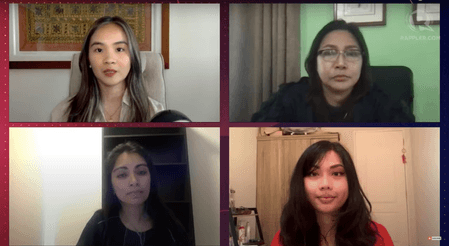
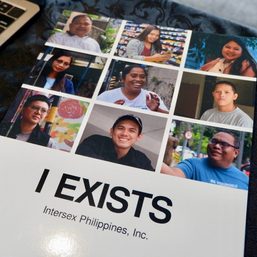

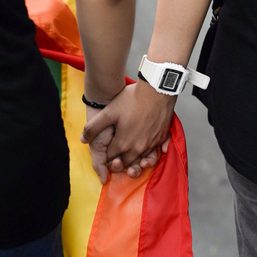
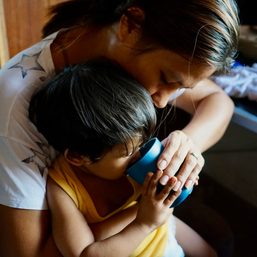
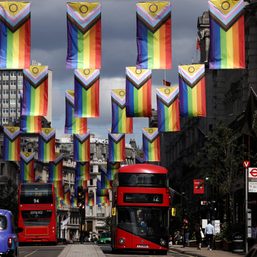
There are no comments yet. Add your comment to start the conversation.